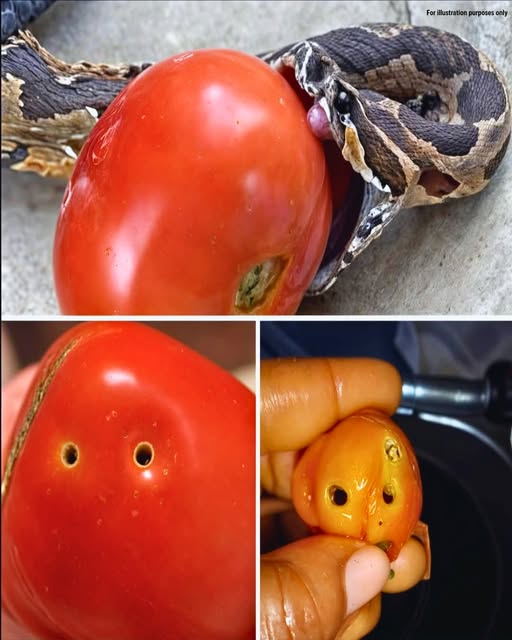Let’s be honest—there’s nothing more disappointing than pulling what looks like the perfect, ripe tomato out of your garden or grocery bag only to find a mysterious hole staring back at you like it has some sort of attitude. It’s the kind of surprise that can make your stomach turn just a little, especially if you had big plans for that tomato in a sandwich or a salad. But before you get all dramatic and toss it straight into the compost bin, let’s take a second to breathe.

Holes in tomatoes might look concerning, but they’re actually pretty common, and while the cause might be a little gross, most of the time it’s something you can fix or prevent in the future. So let’s break down what causes these holes, what they mean for your tomatoes, and how to keep them from showing up again. The most likely explanation for holes in tomatoes is that something’s been snacking on them. Insects are usually the top suspects—think tomato fruitworms, hornworms, stink bugs, or beetles. These little pests see your garden as an all-you-can-eat buffet and have no shame about chewing or boring holes into your tomatoes. Sometimes the damage is obvious, but other times, the outside looks almost untouched while the inside is a disaster.
I remember one summer morning, I spotted a giant hornworm just chilling on one of my plants like he belonged there. Not only had he chewed up the leaves, but he had also claimed a tomato for himself. It was impressive in a horrifying kind of way. Then there are the birds and squirrels. Sure, they’re cute—until they start treating your tomatoes like target practice. Birds are especially drawn to red, ripening fruit and might peck at your tomatoes, especially during dry weather when they’re searching for water. Squirrels are even worse. They’ll take one big bite and move on, leaving you with half a tomato and a full dose of frustration. If you see neat peck marks, it’s probably a bird. If half your tomato is gone, a squirrel’s likely the culprit.
But not all holes are from pests—sometimes it’s just nature being unpredictable. Your tomatoes might develop holes due to growing issues like blossom end rot, weather stress, or a condition called catfacing, which causes deformities and holes due to cold temperatures during flowering. These kinds of holes aren’t caused by anything munching on your tomatoes but can still make them look less than perfect. So can you still eat a tomato with a hole in it? Maybe. If the hole is small and there’s no sign of bugs inside, and if the inside looks fresh with no mold or strange smells, then yes, go ahead and use it—just cut around the damaged area.
But if the hole is large, the tomato feels mushy, smells funky, or you spot something moving inside (yes, that’s happened), don’t risk it. Toss it out and move on. Once, I thought I could save a tomato with a tiny hole—until I cut it open and discovered a tunnel with a live insect squirming inside. I dropped it and ran, lesson learned. Now let’s talk about prevention, because no one wants to deal with holey tomatoes again. First, inspect your plants regularly. A quick daily check can help you spot pest activity before it gets out of hand. Look for signs like chewed leaves, droppings, or tiny eggs underneath the leaves.
Second, keep your watering consistent. Uneven watering can cause fruit to split, and those splits become easy targets for bugs. After dry spells, sudden heavy watering is especially risky. Third, use garden fabric or mesh netting to keep birds and squirrels away. It’s a simple, humane way to protect your tomatoes without harming the critters. Fourth, consider companion planting. Growing basil, marigolds, or garlic near your tomato plants can help repel pests naturally and even improve the overall garden vibe.
Lastly, keep your garden clean. Old fruit, fallen leaves, and overgrown weeds are like five-star hotels for bugs—cleaning up discourages them from sticking around. If you do find a tomato with a hole, your plan is simple: inspect it for bugs or mold, slice it open to check the inside, use it if it’s good, toss it if it’s sketchy, check your plants for other damage, and treat whatever issue is causing it. At the end of the day, a tomato with a hole is more of a garden red flag than a total disaster. It’s just a sign that something needs adjusting—maybe better watering, more pest control, or just accepting that squirrels can be jerks. Now that you know what to look for and how to handle it, you’ll be better prepared to keep your tomato harvest healthy. And hey, if you lose a few to bugs or critters, just chalk it up to nature taking its share—grudgingly, of course.





